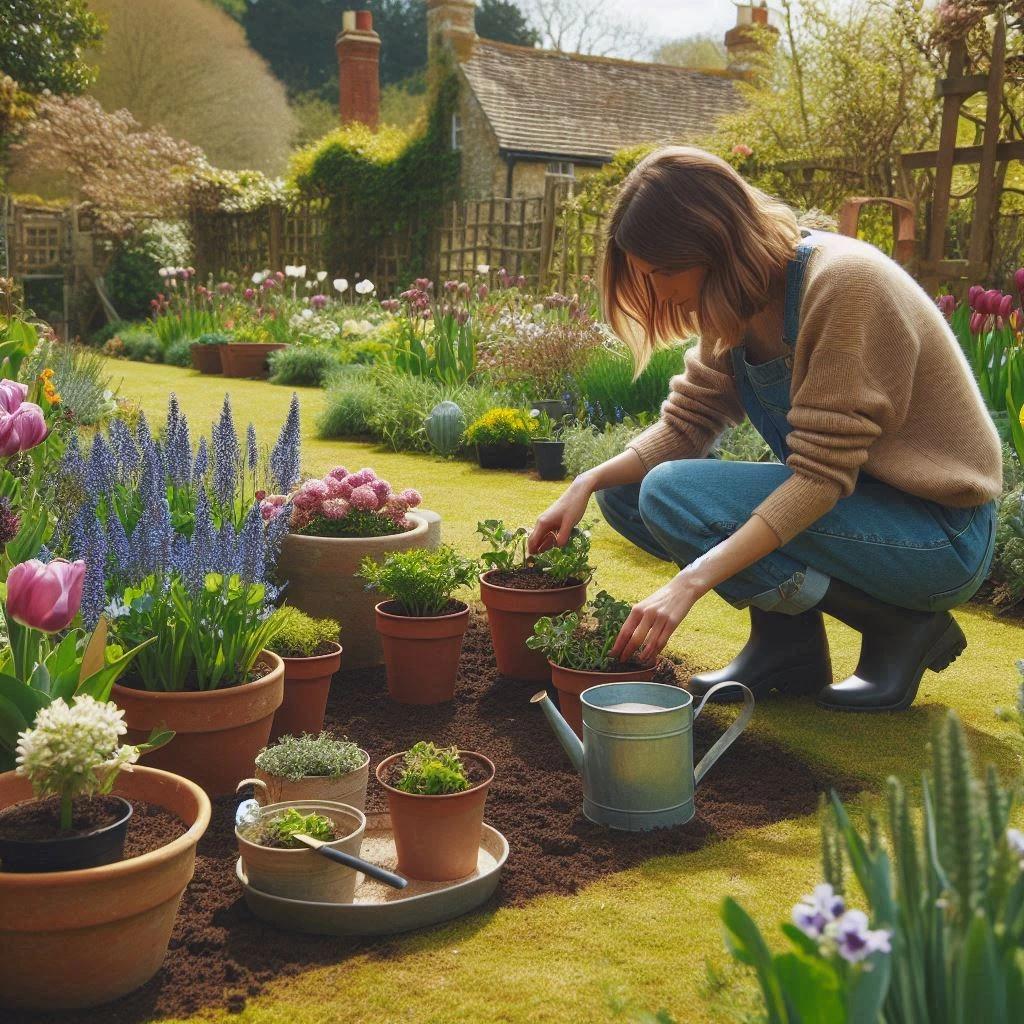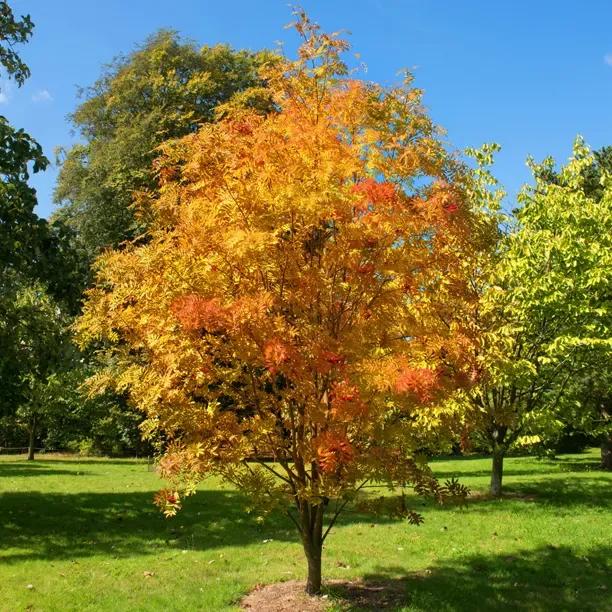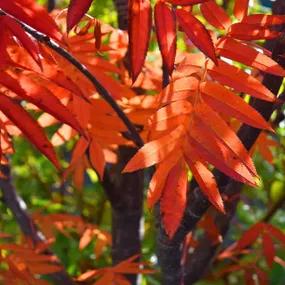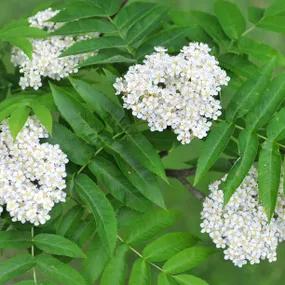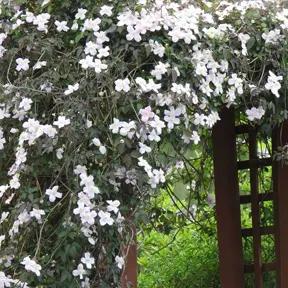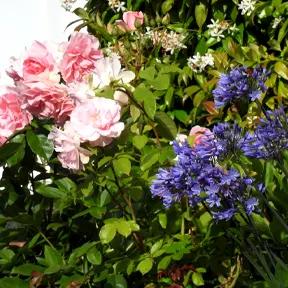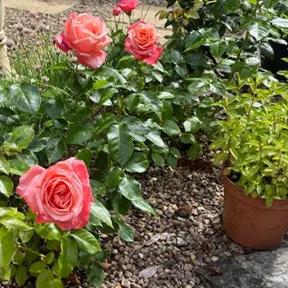Scarlet Japanese Rowan, Large Trees
- Japanese Rowan.
- Neat, rounded mature form
- Fiery autumn colour, red berries.
- Sizes: Big standard trees only.
- Max. Height: 7m
- Bareroot Delivery: Nov-Mar.
- RHS Award of Garden Merit
Recommended extras
Description
Sorbus commixta Embley: Bareroot Scarlet Japanese Rowan Trees in Standard Sizes
Embley is exceptionally glamorous in autumn when the leaves remain on the branches for weeks, turning yellow at first, then warming to fiery orange-red tones. The glossy orange-red berries should decorate the tree into early November. The bunches of white flowers in late spring are less impressive but still great for bees and butterflies.
It is upright and narrow (fastigiate) when young, maturing after a decade or two into a rounded, tidy canopy up to about 7 metres high.
Browse our other varieties of Rowan & Mountain Ash.
Delivery season: Rowan trees are delivered bareroot during late autumn and winter, approximately November-March inclusive.
Choosing a size: Small trees are cheaper, easier to handle and more forgiving of less than ideal aftercare, so they are best for a big planting project. If instant impact is your priority, or if you are only buying a few plants for use in a place where it is convenient to water them well in their first year, then you may as well use bigger ones. All our bareroot trees are measured by their height in centimetres above the ground (the roots aren't measured).
Features:
- Neat, rounded mature form
- Fiery autumn colour, red berries.
- Dislikes chalk
- Sizes: Big standard trees only.
- Max. Height: 7m
- Bareroot Delivery Only: Nov-Mar.
- RHS Award of Garden Merit
Growing Embley Rowans
Any reasonably moist, well drained soil except chalk, where it tends to be stunted and short-lived. It is also unlikely to thrive on very dry, sandy soils in warmer parts of the country without irrigation. Full sun or partial shade. Suitable for large containers designed for trees. Tolerant of pollution and exposed locations, but not the coast.
Planting Instructions
Planting Sorbus commixta:
Fully hardy, tolerant of acidic soils.
It doesn't fare well on chalk, and will sulk if planted in the shade, refusing to produce more than a few flowers and fruit.
It is drought sensitive, so we recommend helping it out by applying a thick layer of mulch around it in mid to late spring, after a few days of rain have fallen and the ground is wet, and keep an eye on it during a hot summer for several years after planting.
Prepare your site before planting:
It is good to dig over the site where you plant a tree several months in advance. Kill the weeds first: for tough weeds like nettles, brambles and ground elder, you will usually need a weed-killer to get rid of them. When you dig the soil over, remove stones and other rubbish and mix in well rotted compost or manure down to the depth of about 2 spades.
Watch our video on how to plant a tree for full instructions.
Remember to water establishing trees during dry weather for at least a year after planting. You will also need to weed around the plants. Watering should be thorough, so the ground is soaked. Let the soil almost dry out before watering again. Watering & weeding will be necessary for at least a year after planting.
Tree Planting accessories:
Prepare your site for planting by killing the weeds and grass.
You can buy a tree planting pack with a wooden stake & rubber tie to support the tree and a mulch mat with pegs to protect the soil around the base of your tree from weeds and drying out.
We suggest that you use mycorrhizal "friendly fungi" on the roots of all newly planted large trees: if your soil quality is poor, we strongly recommend it.
You can also improve your soil with bonemeal organic fertiliser.
If your trees do need pruning, it is ideal to do this in winter. Always hire a tree surgeon to remove large branches.
Remember to check the stake and tie supporting your trees a few times a year. Tighten the tie if it becomes loose and loosen it as the tree grows. Make sure that the tree's trunk isn't rubbing against the stake.
Hygiene & Diseases:
Dead, damaged or diseased wood can be pruned off as soon as it appears.
Disinfect your pruning tools between every cut if there is any sign of disease.
Burn or dispose of any diseased material, do not compost it.
Did You Know?
Native to the Far East, first brought to the UK in the 1880's. This cultivar was bred here by Hillier Nurseries.
In Japan, the species is known as nana kamado. A kamado is a type of traditional grill made of ceramic, and nana means seven, so the name refers to the wood burning so long and well that it is "seven times" better than other wood: seven is even more of a lucky number in Japan than in the West, with deep religious associations in both their Buddhist and native Shinto traditions.
Standard trees are measured by their girth in centimetres 1 metre above ground level: their trunk's waist measurement. Unlike sapling trees and hedge plants, standards aren't measured by their height, which will vary quite a bit both between and within species.
So, a 6/8cm standard tree has a trunk with a circumference of 6-8cm and an 8/10 standard has a trunk 8-10cm around. This measurement makes no difference to the tree's final height.
On average, standard trees are 2-3.5 metres tall when they arrive, but we cannot tell you precisely how tall your trees will be before we deliver them.
It's Summer Planting Season 2025

Pot Grown & Plug Plants Delivered
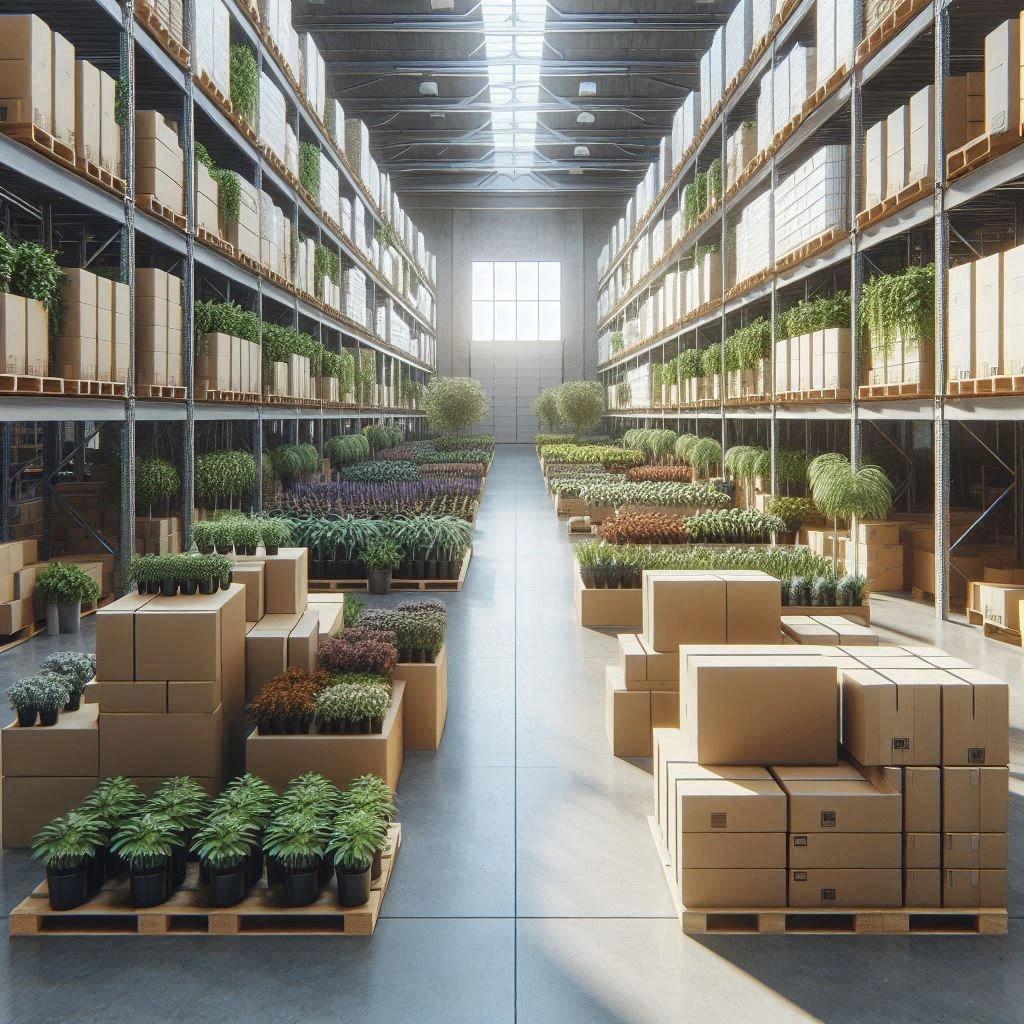
Direct from the Nursery Value

No more broken plants in the post!
